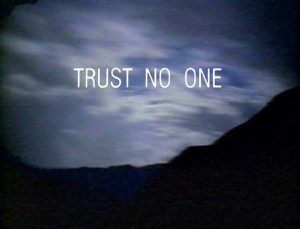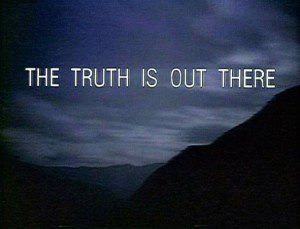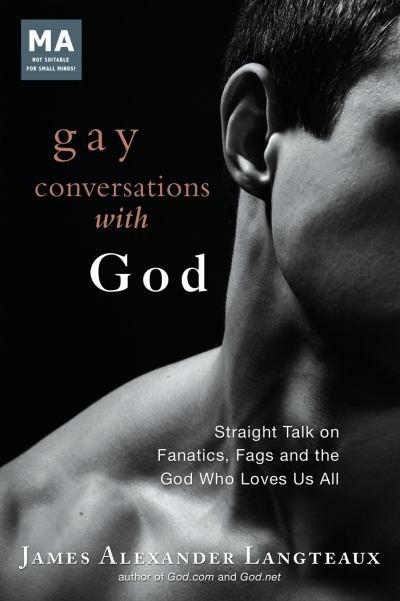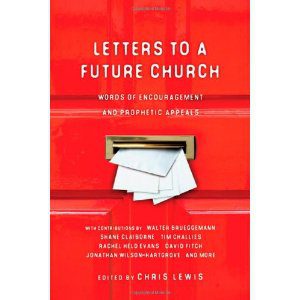This month, the Patheos Book Club is looking at Tim Stafford’s Miracles.
I might have better been able to enjoy this book if it hadn’t come with a misleading subtitle that created a set of false expectations.
That subtitle is “A Journalist Looks at Modern-Day Experiences of God’s Power,” but that has very little to do with this book. Stafford is, in fact, an accomplished journalist, but this book is not an act of journalism. Miracles is a personal testimony, it is an often thoughtful meditation on faith and the nature of God, and it is a winsome, if not ultimately persuasive, argument for belief in miracles. But it’s not journalism.
 Stafford isn’t writing here as a journalist, but as an advocate for a belief. He often makes a strong case for that belief, but that is always what he is about in this book — making a case. He’s set aside the role of the journalist to take on the role of a defense attorney. In that role he calls on eyewitnesses and presents their testimony as evidence. Stafford assures us, repeatedly, that they are credible, but that is not how credibility accrues. Witness testimony is made credible by withstanding cross-examination, but these witnesses are never cross-examined. Miracles lacks a prosecuting attorney to test — and to demonstrate — the strength of Stafford’s case for the defense.
Stafford isn’t writing here as a journalist, but as an advocate for a belief. He often makes a strong case for that belief, but that is always what he is about in this book — making a case. He’s set aside the role of the journalist to take on the role of a defense attorney. In that role he calls on eyewitnesses and presents their testimony as evidence. Stafford assures us, repeatedly, that they are credible, but that is not how credibility accrues. Witness testimony is made credible by withstanding cross-examination, but these witnesses are never cross-examined. Miracles lacks a prosecuting attorney to test — and to demonstrate — the strength of Stafford’s case for the defense.
For me that had the effect of generating more skepticism than I might have otherwise had in evaluating the stories Stafford relates. Reading this book I found myself sliding into the vacant role of the prosecutor, partly just out of a sense of forensic fairness.
The story at the heart of this book involves a healing. Jeff was in a wheelchair, unable to walk due to unbearable pain in his feet. A series of doctors were unable to determine the cause of this pain, or to provide any remedy. Then one day Jeff was taken to a healing service in a Pentecostal church. They prayed over Jeff and, just at that moment, the pain was gone. For good, it seems. Jeff couldn’t walk. Now he can. That happened.
Something extraordinary occurred. But what, exactly? Stafford says it was a miracle of healing by the triune Christian God. I’m prepared to agree. I’m even inclined to agree. But a host of questions remain not only unanswered, but unacknowledged.
For a sense of the problem here, let me cite one of the 20 “affirmations” from Stafford’s penultimate chapter:
Miracles happen. Reliable people testify to miracles. As with all historical events, trustworthy witness is the only real test.
But we can’t say both that something is miraculous and that it can be regarded just like “all historical events.” As Stafford says in his eighth affirmation: “Miracles are rare.” And they are wondrous — to be wondered at.
Miracles, in other words, are extraordinary. The claim that a miracle has occurred is an extraordinary claim, and such extraordinary claims require extraordinary evidence. The “trustworthy witness” of a few people (setting aside the question of how to establish “trustworthiness”) may be a sufficient test for an ordinary historical event, but we’re going to need more than that to confirm an extraordinary event.
That’s what’s frustrating about the subtitle’s broken promise of a journalist’s perspective. Jeff’s story is news, but no editor would agree to run such a story unless it was confirmed by several other sources beyond Jeff and his family. Jeff’s mom tells Stafford that before his healing, the family had sought “a consultation with a famous doctor at Stanford.” Stafford quotes her account of that consultation:
“‘You need to stop,’ he told us. ‘No more surgeries. You have to get used to it. Jeff is going to be in a wheelchair. It’s possible the pain will go away by itself, but we don’t know what causes it, and we can’t predict what will help it.'”
A journalist’s editor would have demanded the name of that doctor, and that his account of that consultation also be included in the story. The lack of any comment from that doctor after Jeff’s healing also raises flags.
Reading Miracles, I kept feeling like AD Walter Skinner on The X-Files, listening to another astonishing report from Agent Fox Mulder. I kept wanting to ask the question Skinner always asked, “What does Agent Scully think about this?”
 That X-Files analogy also highlights another underlying problem with Miracles. If you’re not familiar with Chris Carter’s wonderful 1990s TV show, it follows the adventures of two FBI agents who are tasked with investigating unexplained phenomena. Agent Scully, played by Gillian Anderson, is the one who believes in UFOs.
That X-Files analogy also highlights another underlying problem with Miracles. If you’re not familiar with Chris Carter’s wonderful 1990s TV show, it follows the adventures of two FBI agents who are tasked with investigating unexplained phenomena. Agent Scully, played by Gillian Anderson, is the one who believes in UFOs.
Many people get that backwards. Since Scully is the skeptical scientist and Mulder the idealistic true believer, they mistakenly think Mulder believes in UFOs. He doesn’t. Mulder can’t abide allowing flying objects to remain unidentified. He doesn’t believe in UFOs, he believes in alien spacecraft.
This is true of most of the alleged experts on UFOs or on the “mysteries of the unexplained.” You’ll find many such experts in supermarket tabloids or on the wide array of tabloid TV shows now boosting the ratings and destroying the credibility of purportedly educational cable channels. The experts are brought on to discuss some “unexplained phenomena” and within seconds they explain it. Eyewitnesses attest to strange lights in the sky and the alleged “ufologist” quickly declares, with utmost confidence, that these flying objects can be identified. He proceeds to identify them with great precision, expressing certainty as to what they are, what they mean, and even the planet of origin of their supposed pilots.
Like these “experts,” Agent Mulder allows no room for the possibility of unidentified flying objects or for unexplained phenomena. His partner, Scully, might often be at a loss for an explanation, but Mulder never is.
Mulder is a crusader. He is, like Tim Stafford, an advocate for a particular point of view. Mulder isn’t a journalist or a scientist disinterestedly collecting data and following wherever it leads. He is, instead, a theorist seeking data that might prove his theory.
Now, both the fictional Mulder and the real-world Stafford seem to appreciate one danger of this approach. They both seem to recognize — and to guard against — the temptation to cherry-pick favorable data, sifting the evidence to select only that which supports their view.
But neither of them is able to escape the way their approach inevitably shapes one’s perception of the world. It condenses a universe of possibilities into a binary, yes-or-no question, precluding any consideration of other possibilities. That’s why Mulder needs Scully — to remind him of those other possibilities, including the indispensable category of “We do not know and we cannot say.”
Mulder needs Scully — and Tim Stafford needs Scully — to remind him that his theory isn’t the only possibility. Something extraordinary occurred. Jeff could not walk. Now Jeff can walk. Stafford’s theory-bound approach is only able to consider this through the binary framework of asking “Is this a miracle or not?” And for Stafford that word “miracle” refers to a very specific sort of divine intervention by a very specific deity.
But if “trustworthy witness is the only real test” for verifying miraculous acts, then we’re going to be stuck accepting the validity of many miracles that have little to do with the particular form of religion that Stafford and I subscribe to. Stafford writes:
Miracles have happened in front of all kinds of people who have testified to them and in some cases have tested them. A thousand witnesses will tell you that they have seen a miracle with their own eyes.
That’s true. But not all of those thousand witnesses are Christians and not all of those miracles are Christian miracles. It’s hard to know from this book what Stafford would make of the multitude of miracle stories from Islam, Hinduism, Vodou and various Pagan traditions. Would he accept the trustworthy witness of the Latter-day Saints in 1848 Utah who testify to the “miracle of the gulls“?
Or consider the dissonant note in his chapter on “Global Pentecostalism.” He profiles a group of Pentecostal missionaries in rural Mozambique. “Don’t go back to the witch doctor,” one missionary cautions a local woman.
This same missionary, Stafford tells us, conducts regular healing services and the missionaries’ church is overflowing with tales of miraculous healing. “It’s hard to remain skeptical when you hear so many such testimonies,” Stafford writes.
Yet just as many testimonies from just as many earnest people could be collected to attest to the miraculous works of “the witch doctor.” If such testimonies are sufficient evidence for the Christian miracles, why are they insufficient for the miracles of the shaman?
I don’t think Stafford dismisses the miracles of the witch doctors just because they’re the product of a rival religion. I think he’s simply unable to consider them because they lie outside the binary framework of his theory. They don’t fit into, or speak to, the sectarian Christian vs. rational atheist either/or that shapes the book’s discussion.
And but so, what do I think happened to Jeff?
To Stafford’s credit, it is impossible to engage this book without engaging that question. Something happened — something unusual and extraordinary and wonderful. If it had not happened, Stafford would not have written this book. But because it did happen, he had to write this book.
And for all the blindspots and shortcomings I’ve complained about above, that makes this book compelling. Here is a man, Tim Stafford, who has witnessed something that doesn’t fit — something that knocked him back on his heels and sent him on a fitful search for answers to account for it.
Some of Stafford’s most insightful writing in Miracles anticipates my own reaction to this story of Jeff’s healing. He notes that such stories never seem quite as compelling when heard second-hand. And he guesses — correctly — that many of us will not be as awestruck as he was witnessing the healing of his friend up close.
Jeff couldn’t walk before and now he can. That happened. I don’t share Stafford’s confidence that we can know how or why it happened, or what, precisely, it means. Extraordinary claims require extraordinary evidence and, in the absence of that, I would classify this story as a UFO, as an unexplained phenomenon.
I suppose that response will disappoint Stafford or cause him to classify me among the “semi-believing doubters.” But I would remind him of a phrase he uses dozens of times throughout Miracles — “signs and wonders.” That last word — wonder — can convey both awe and curiosity. Where Stafford leans more toward the former, I’m inclined more toward the latter. If this story of healing has not left me in a state of wonder, it does have me wondering.












